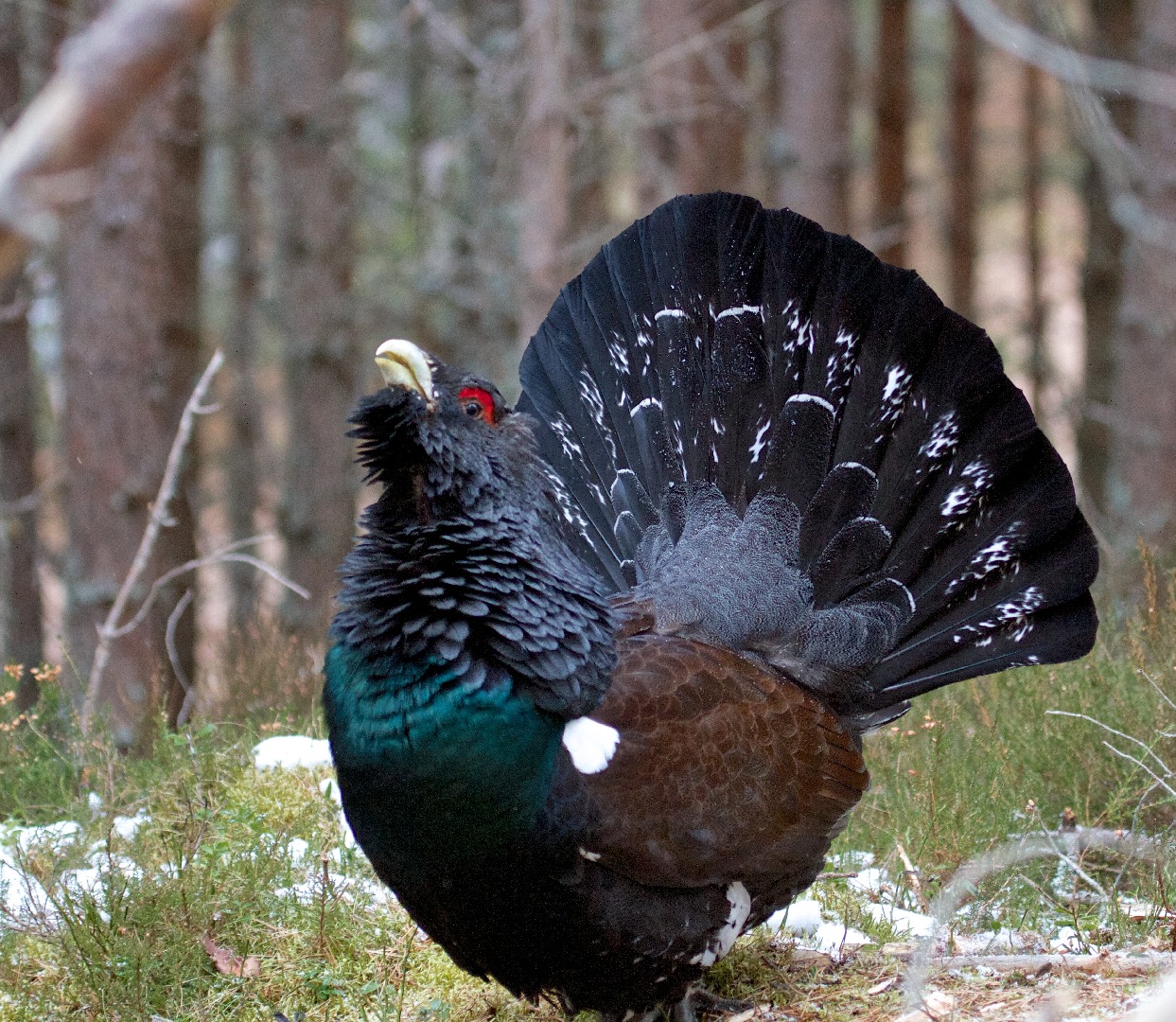 What type of bird is a western Capercaillie?
What type of bird is a western Capercaillie?
What type of bird is a western Capercaillie?
Male and female western capercaillie can easily be differentiated by their size and colouration. The cock is much bigger than the hen. It is one of the most sexually dimorphic in size of living bird species, only exceeded by the larger types of bustards and a select few members of the pheasant family. Cocks typically range from 74 to 85 centimetres (29 to 33 inches) in length with wingspan of 90 to 125 cm (35 to 49 in) and an average weight of 4.1 kg (9 lb 1 oz). The largest wild cocks can attain a length of 100 cm (40 in) and weight of 6.7 kg (14 lb 12 oz). The largest specimen recorded in captivity had a weight of 7.2 kg (15 lb 14 oz). The weight of 75 wild cocks was found to range from 3.6 to 5.05 kg (7 lb 15 oz to 11 lb 2 oz). The body feathers are dark grey to dark brown, while the breast feathers are dark metallic green. The belly and undertail coverts vary from black to white depending on race (see below). The hen is much smaller, weighing about half as much as the cock. The capercaillie hen's body from beak to tail is approximately 54–64 cm (21–25 in) long, the wingspan is 70 cm (28 in) and weighs 1.5–2.5 kg (3 lb 5 oz–5 lb 8 oz), with an average of 1.8 kg (3 lb 15 oz). Feathers on the upper parts are brown with black and silver barring; on the underside they are more light and buffish yellow. Both sexes have a white spot on the wing bow. They have feathered legs, especially in the cold season, for protection against cold. Their toe rows of small, elongated horn tacks provide a snowshoe effect that led to the German family name "Rauhfußhühner", literally translated as "rough feet chickens". These so-called "courting tacks" make a clear track in the snow. The sexes can be distinguished very easily by the size of their footprints. There is a bright red spot of naked skin above each eye. In German hunters' language, these are the so-called "roses". The small chicks resemble the hen in their cryptic colouration, which is a passive protection against predators. Additionally, they wear black crown feathers. At an age of about three months, in late summer, they moult gradually towards the adult plumage of cocks and hens. The eggs are about the same size and form as chicken eggs, but are more speckled with brown spots.
